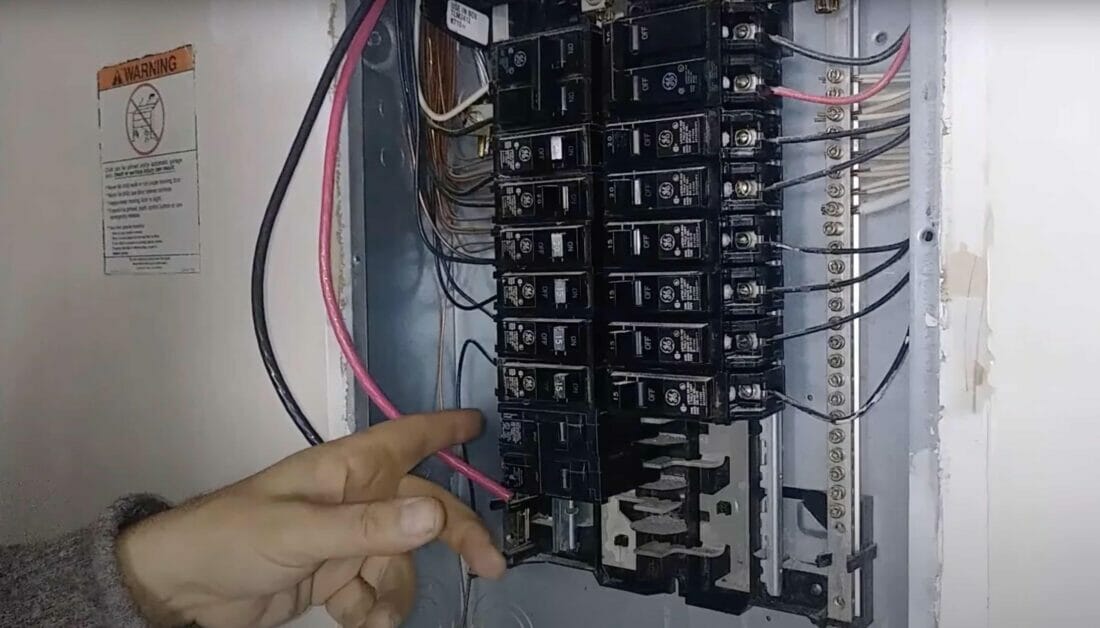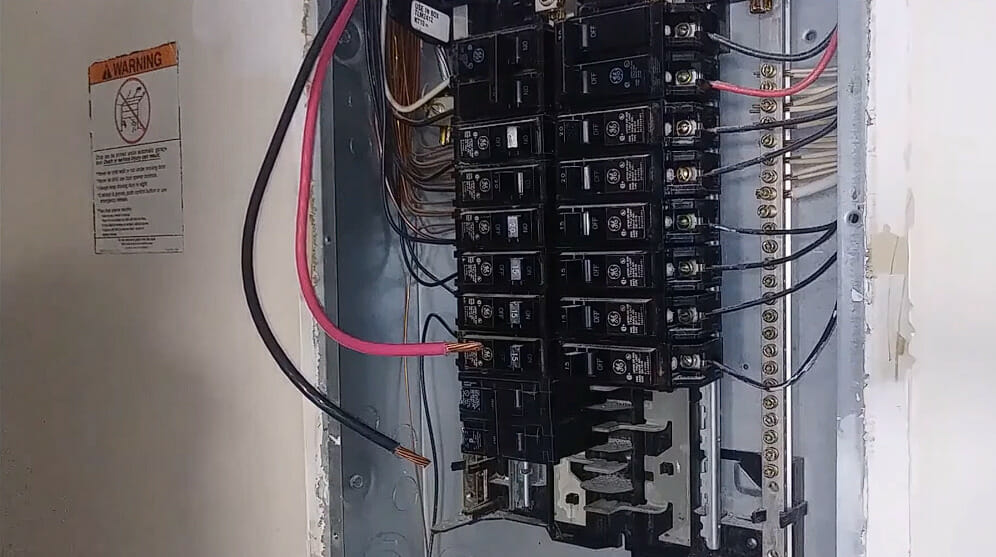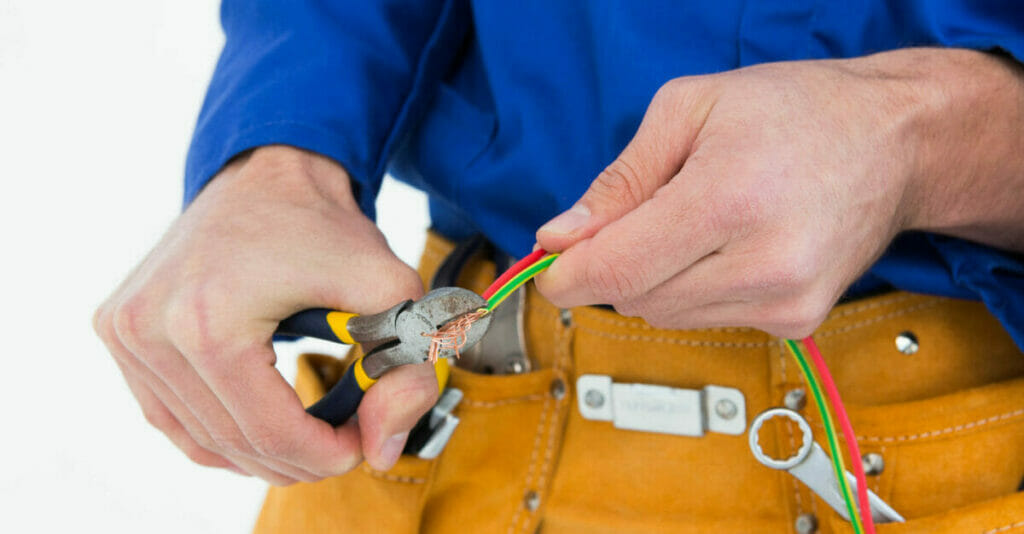What Size Wire for 50 Amps (A Handy Guide)

When it comes to electricity, safety is the name of the game, and that’s why I’m here to talk about what size wire you need for a 50-amp circuit.
Key Takeaways – The correct wire size for a 50-amp breaker is 6 gauge. That’s because 6 AWG copper wires are rated up to 55 amps, which makes them a perfect fit for this job.
Now that you know the wire size you need, you’re one step closer to finishing that electrical project! I’ll guide you further through the nitty-gritty to ensure it all comes together seamlessly. Let’s do this!
Determining Wire Size for 50 Amp Circuit

Choosing the right wire size is crucial to prevent overheating and potential fire hazards. So, let me tell you a bit more about it.
National Electrical Code (NEC) Guidelines For 50 amp
First, let’s discuss the National Electrical Code (NEC) guidelines. These rules ensure our electrical work is safe, efficient, and well-organized. I can’t stress the importance of following these guidelines enough.
So, according to the American Wire Gauge system, the right wire size for a 50 amp circuit is 6 gauge. These 6 AWG copper wires are rated up to 55 amps, making them a perfect choice for our project!
Notice how I mentioned “copper” wires? That’s because copper is typically the go-to conductor type.
But wait, there’s more! When it comes to wire insulation, different types can handle various temperature ranges. Most wires come with Thermoplastic High Heat-resistant Nylon Coated (THHN) insulation, which can handle temperatures up to 90°C.
If you’re working with a 50 amp circuit, you’re safe to use the standard THHN insulation.
And lastly, don’t forget about the voltage drop! In any wiring project, you want to minimize the voltage drop to maintain optimal electrical performance.
Below is a detailed guide on calculating voltage drop and choosing the optimal wire size.
Voltage Drop and Wire Size

It’s essential to understand these factors when designing your electrical system. We must consider the voltage drop when selecting wires to ensure our appliances receive adequate power.
Voltage Drop Calculation
Voltage drop is the decrease in voltage that occurs as the current travels through the conductor. The longer the distance, the higher the voltage drop.
So, it’s essential to calculate the voltage drop for a specific distance to select the right wire size.
We need to know the distance, voltage, amperage, and power to calculate the voltage drop. For instance, let’s say we’re working with a 50-amp circuit and a distance of 50 feet. We’ll also use single-phase 240V as our voltage.
Here’s a quick formula to estimate the voltage drop:
Voltage Drop = (Amps × Distance × Resistance) ÷ Voltage
So, once you’ve got the voltage drop figured out, it’s time to pick the right wire size.
As mentioned, for a 50-amp circuit, a 6 AWG copper wire is generally recommended. It can handle up to 55 amps, making it perfect for the job.
Remember, though, that different factors, like ambient temperature and building codes, can impact the wire size choice. Make sure you stay within the guidelines in your area!
That’s the voltage drop and wire size gist for a 50 amp circuit. Remember these factors, and you’ll have a safe and efficient electrical setup for your devices and appliances.
Wire Gauge Charts
| Wire Gauge | Amperage Capacity |
|---|---|
| 16-gauge | 13 amps |
| 14-gauge | 15 amps |
| 12-gauge | 20 amps |
| 10-gauge | 30 amps |
| 8-gauge | 40 amps |
| 6-gauge | 55 amps |
| 4-gauge | 70 amps |
| 3-gauge | 85 amps |
| 2-gauge | 95 amps |
Now, pay attention—wire gauge numbers can be tricky. The lower the number, the larger the wire diameter. So, for our 50 amp project, we’ll need a 6-gauge wire. Nice and sturdy!
When to Hire an Electrician

You know me; I’m all about DIY when it’s safe and feasible. But sometimes, it’s best to call in the experts. Working with electricity can be hazardous, and you want a qualified electrician for some tasks.
Here’s when you should consider hiring a pro:
- If you’re unsure about the proper wire size or type for your project.
- When you need to install a new circuit breaker or subpanel.
- If local regulations or your insurance company require a professional for electrical work.
Remember, safety comes first! A skilled electrician can ensure everything’s up to code and help you avoid any potential hazards.
So, if you’re planning an upgrade for your 50-amp service or tackling any electrical project, I encourage you to consult a qualified electrician. They’ll ensure everything’s installed correctly and safely, giving you peace of mind.
That said, while you’ve got an expert on the job, they’ll likely use a 6-gauge copper wire in the installation, as it’s rated for up to 55 amps. For heavy appliances, copper wire is always recommended to ensure a safe and suitable connection.
And that’s a wrap! Stick with those 6-gauge copper wires, and always hire a qualified electrician when the situation calls for it. Stay safe, and happy wiring
References
Websites:
- National Fire Protection Association. https://www.nfpa.org/
- ESFI: National Electrical Code. https://www.esfi.org/workplace-safety/industry-codes-regulations/
- The Circuit Detective. http://thecircuitdetective.com/
- Electrical Safety Foundation International (ESFI). https://www.esfi.org/
Video Reference
Joseph K
